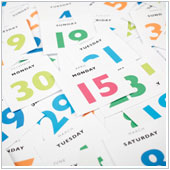Calendars are among the most useful and arguably important tools that business owners use. While some businesses use paper calendars, many are starting to switch to digital versions like Google Calendar. While this app is handy, Google has a number of somewhat hidden features that you may find interesting too.
Google Labs was a feature of many popular Google Apps that allowed users and developers to introduce and experiment with new features and functionality. While Google has stopped support for Labs, there are still some available features that could still be useful.
You can access these extra features by:
- Signing into your Google Account.
- Opening the Calendar app. This can be done by going to calendar.google.com.
- Pressing the cog under your picture in the top-right of the window.
- Selecting Labs.
When you want to enable a Labs feature you can click on Enable and then Save at the bottom. You will then be taken back to your main calendar with the new Labs feature enabled. To ensure that this is available try reloading the Calendar window.
5 Useful Labs Features
Here are five Calendar Labs features that you may find useful.
1. Who’s My One-On-One With?
With many events that you are invited to, especially if they are one-on-one, you can’t easily tell who the meeting is with from the main calendar view. When the Calendar Labs feature is enabled, the name of the person you are having a one-on-one meeting will be displayed in the main calendar view.
A good example of this is if a colleague schedules a lunch meeting with you. Their name will show up in the event information on the main calendar, making it easier for you to quickly see who you are meeting and consequently be better prepared.
2. Year View
You can view your Google Calendars in either monthly, weekly, daily, four daily, or agenda views, which is usually enough for most people. But there are times when managers or owners need to see a yearly view.
The Calendar Labs feature adds a new menu bar labeled Year View to the right of the calendar. Entering the year you would like to look at and pressing Go will display a yearly calendar for that particular year.
3. Hide Morning And Night
If you are using your calendar for business, there is a good chance that you aren’t actually scheduling events outside of regular business hours e.g., at 3:00 am. With the Calendar Labs feature you can minimize the time range so this won’t show on your calendar.
You can configure it by:
- Enabling Labs.
- Hovering your mouse over the grey line in the hour’s column of the calendar. Make sure you are in Week view. You should see a pop-up message saying Drag to hide time range.
- Click and drag to select the time you would like to hide.
Once you set which hours to hide you can click on the greyed out area at the top or bottom of the hour’s column to show the hidden hours.
4. Event Attachments
Oftentimes, when you schedule a meeting or event you will need to provide background information or files relating to your discussion agenda. While you could attach these files in an email, it is easier to include these files along with the invitation.
This Labs feature enables you to attach files into the event information on the calendar. You can do this by:
- Creating a new event on your calendar by clicking and dragging on the time you want the event to take place.
- Pressing Edit event on the pop-up window that opens.
- Clicking Add attachment under the Description box.
You can select a file from Google Drive or press Upload to select files from your hard drive. You can also drag and drop the file from your hard drive right into the window.
5. Free Or Busy
If your Google contacts have shared their calendars with you, Labs allows you to see who is free or busy at any given moment. When enabled, you should see their calendar in the right-hand bar under other calendars. Their status will show up under their name.
These are just a few of the Labs features available. While Google has stopped support for these, meaning there won’t be any new developments, the existing ones are still great. Give them a try today, and contact us if you would like to learn more.
Published on 6th November 2013 by Jeanne DeWitt.


